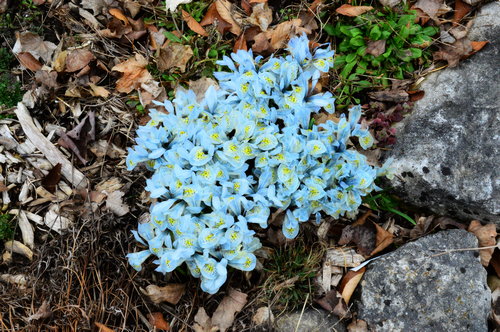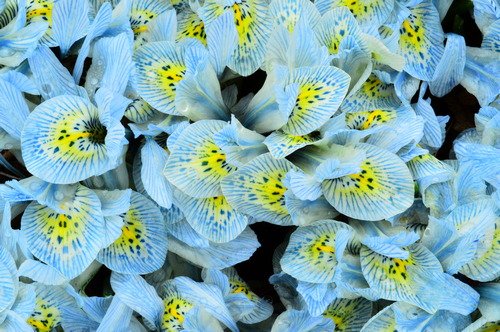Plant of the Month for April, 2020

Iris histrioides x winogradowii
(EYE-ris hiss-TREE-ohy-deez)
General Information:
Iris ‘Katharine Hodgkin’, the orchid iris, is one of the best reticulata-type early spring flowering iris. It makes a great show every year and multiplies quickly to form a good sized clump. The flowers are short, but wider than other similar types. To be honest, I don’t like pale colors in the garden but I’ve fallen in love with this one.

Iris ‘Katharine Hodgkin’:photo by Robert Pavlis
The naming of reticulata iris are a bit confusing. There is an iris group called reticulata which contains numerous species such as I. danfordiae, I. histrioides and I. winogradowii and there is a species, Iris reticulata, which is also part of this group.
Iris ‘Katharine Hodgkin’, sometimes spelled Katherine, is a cross between I. histrioides (pale blue flowers) and I. winogradowii (pale yellow flowers) but is usually called Iris reticulata ‘Katharine Hodgkin’. Some sources call it Iris x histroides ‘Katharine Hodgkin’, which is a more correct name.

Iris ‘Katharine Hodgkin’:photo by Robert Pavlis
One of the great things about this group of iris is that snow, cold or even a cloudy day do not force the flowers to close. They are always open and even snow will do little danmage.
As the flowers open, the grass-like leaves start to grow and a few weeks after the flowers have faded, they will be about 30 cm tall. They are thin, but quite stiff. You hardly notice them unless they are planted right at the front of the border. By mid-summer the plant is back underground hoping for a dry spell.
Clumps can be divided after flowering but it might be best to leave them alone, unless flowering declines. Moved bulbs may sulk for a year or two.
If you would like to see more varieites of Iris reticulata, have a look at this video: https://youtu.be/QWI1NSZxzLY
Life Cycle: bulb
Height: 30 cm (12 in), flowers at 10 cm (4 in)
Bloom Time: early spring
Natural Range: Turkey, Caucasus, Lebanon, northern Iraq and Iran
Habitat: sunny dry slopes
Synonyms: n/a
Cultivation:
Light: part shade to full sun
Soil: well drained
Water: average to dry
USDA Hardiness Zone: 3 - 8 (9?)
Propagation: division of bulb offsets
Seedex availability (ORG&HPS annual Seed Exchange): uncommon
Give sown seeds several weeks @ 20°C to imbibe water (perhaps even germinate!), then expose to fluctuating outdoor winter temperatures including freezing for 3 months. Gradually increase light and temperature in spring. See https://www.youtube.com/watch?v=SO_KKbGYTEM
